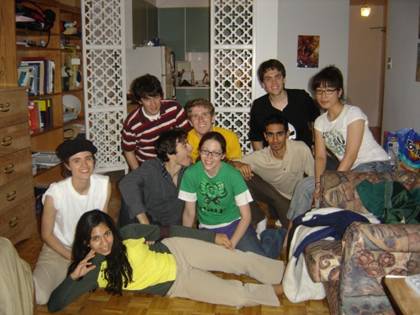McGill University 2006
From 2006.igem.org
| Line 25: | Line 25: | ||
N-terminus and the C-terminus of the YFP, and then ligating these inserts into 2 vectors, containing the | N-terminus and the C-terminus of the YFP, and then ligating these inserts into 2 vectors, containing the | ||
Jun-beta and the Fos-beta respectively. | Jun-beta and the Fos-beta respectively. | ||
| - | We transformed two cell populations, one expressing Jun-beta-YFPN and the other expressing Fos-beta-YFPC.These two cell populations were combined and the two vectors were then expressed, ideally resulting in the fusion of the Jun and Fos leucine zipper proteins on the cell membrane when the cells are in close contact. This would result in the binding of the two halves of the YFP protein resulting in | + | We transformed two cell populations, one expressing Jun-beta-YFPN and the other expressing Fos-beta-YFPC.These two cell populations were combined and the two vectors were then expressed, ideally resulting in the fusion of the Jun and Fos leucine zipper proteins on the cell membrane when the cells are in close contact. This would result in the binding of the two halves of the YFP protein resulting in flourescence. |
</td> | </td> | ||
| - | |||
| - | |||
| + | <td valign="top" width="50%"> | ||
<h3><ul><li>''' Team 2: Repressilator'''</ul></h3> | <h3><ul><li>''' Team 2: Repressilator'''</ul></h3> | ||
| - | We | + | The Elowitz Repressilator attempts to decrease the loss of standard oscillations that previous repressilators faced by utilizing quorum sensing as a means of synchronizing and maintaining standard oscillations. We expanded on this theory by adding YFP and CFP to allow a visual confirmation of the oscillation, and a TetR promoter infront of the LuxR gene and cI after the LuxI gene. Our hopes were that this would assist in standardizing the oscillation of the bacteria. |
[[Oscillator Example|Oscillator Example]] | [[Oscillator Example|Oscillator Example]] | ||
Revision as of 04:14, 28 October 2006

Projects
Lab Procedures
|


